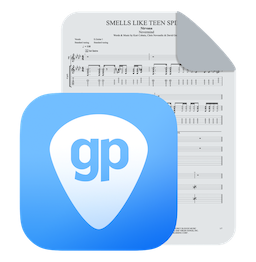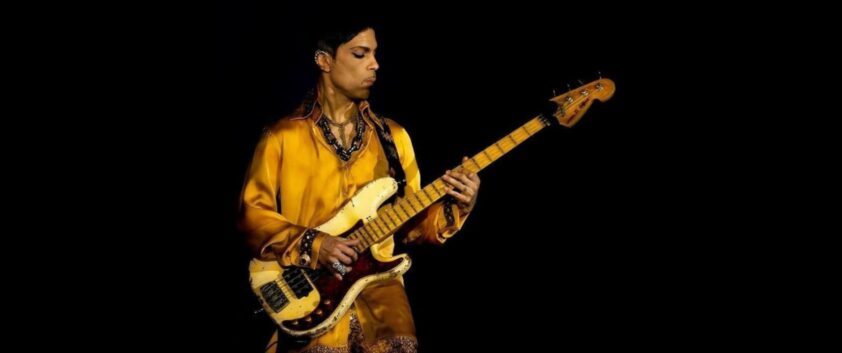
mySongBook: The 10 Grooviest Basslines [10 Guitar Pro Downloads]
- I Want You Back – The Jackson 5 (1969)
- Get Up (I Feel Like Being a) Sex Machine – James Brown (1970)
- Le Freak – Chic (1978)
- September – Earth, Wind and Fire (1978)
- I Wanna Be Your Lover – Prince (1979)
- Celebration – Kool and the Gang (1980)
- Let’s Dance – David Bowie (1983)
- It Ain’t Over ‘Til It’s Over – Lenny Kravitz (1991)
- Time for a Challenge
- Your turn!
- the_jackson_5-i_want_you_back.gp
- james_brown-sex_machine.gp
- chic-le_freak.gp
- earth_wind_and_fire-september.gp
- prince-i_wanna_be_your_lover.gp
- kool_and_the_gang-celebration.gp
- david_bowie-let_s_dance.gp
- lenny_kravitz-it_aint_over_til_its_over.gp
- tower_of_power-soul_with_a_capital_s.gp
- gorillaz-cracker_island.gp
mySongBook, the score library built into Guitar Pro, is packed with songs that feature some seriously groovy basslines. I picked out 10 of my favorites, the kind of lines that just make your head start nodding, from funk and disco to pop and soul.
Download the Guitar Pro demo to access the 10 Guitar Pro files included in this article!
I Want You Back – The Jackson 5 (1969)

I Want You Back is one of the Jackson 5’s biggest hits. It’s a perfect example of how electric bass can drive a song, with a melodic line that basically lays out the track’s main theme.
Contrary to what many bass players believed for years, the bass line wasn’t played by James Jamerson, but by Wilton Felder, who also played on ABC and Marvin Gaye’s Let’s Get It On.
The confusion makes total sense, though, since both musicians were part of Motown’s roster, the legendary ’60s label behind Stevie Wonder, Marvin Gaye, and of course the Jackson 5.
The bassline in I Want You Back is a true classic when it comes to creativity and musicality.
Wilton kept things simple by sticking to the notes of the key (the song is in Ab), adding a few chromatic touches and playing effects to give the line its groove and character. It’s basically essential learning for any bassist who really cares about the instrument.
To recreate a classic ’50s–’60s bass tone, you don’t need much: a Precision Bass with flatwound strings will do the trick.
You can even slide a small piece of foam under the strings near the bridge to accentuate that muted, “thumpy” sound.

Play I Want You Back in mySongBook.
Get Up (I Feel Like Being a) Sex Machine – James Brown (1970)

No introduction needed: James Brown, the Godfather of Soul, released Get Up (I Feel Like Being a) Sex Machine in 1970, a track that became iconic for defining the funk sound we know today.
On bass, a young musician destined for greatness: Bootsy Collins, whose inventive playing was already making waves before he left Brown after a falling out. He later joined Funkadelic and went on to have a brilliant solo career.
Bootsy Collins is known for his flamboyant style and irresistibly funky playing, often enhanced with effects like the envelope filter or wah-wah.
The bassline of Get Up is syncopated, always landing back on the downbeat, which was James Brown’s golden rule.
Play Get Up (I Feel Like Being a) Sex Machine in mySongBook.
Le Freak – Chic (1978)

Chic, an internationally renowned band, is driven by the exceptional guitarist and composer Nile Rodgers. His loyal partner, Bernard Edwards, passed away in April 1996 after a concert in Tokyo. Edwards is considered one of the most influential musicians in history and continues to inspire thousands of bassists around the world. He’s responsible for the grooves on Good Times, We Are Family by Sister Sledge, Spacer by Sheila, and Upside Down by Diana Ross. An impressive track record for Bernard, and for his friend Nile Rodgers as well, who would later co-write Get Lucky for Daft Punk.
Let’s take a closer look at this funk and disco masterpiece: Le Freak.
It features a groove that only Bernard could deliver, complemented by Rodgers’ signature funky guitar riffs that instantly make you want to dance. Edwards specialized in basslines that firmly anchored the song. The key is in respecting the length of each note, this is absolutely essential to keeping the groove alive.
Play Le Freak in mySongBook.
September – Earth, Wind and Fire (1978)
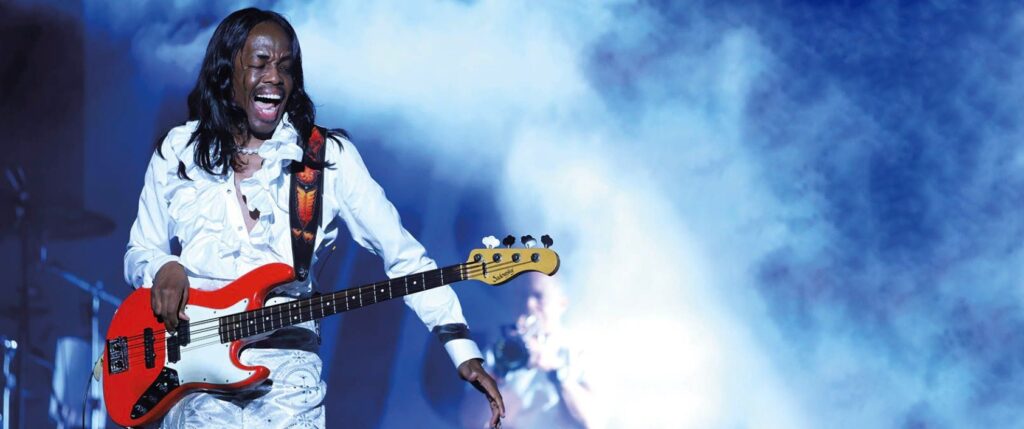
The Chicago-based band was initially influenced by jazz, gospel, as well as traditional music from the Caribbean and Africa. On bass, there’s Verdine White, a founding member alongside his late brother Maurice White. Verdine is still regarded as one of the greatest bassists of all time. He has played on every Earth, Wind & Fire album since 1971 and has also worked as a session bassist and producer for artists like Jennifer Lopez and Level 42.
The track I’m highlighting, September, is one of the band’s biggest hits. Its bassline is instantly recognizable by the A-A-G-A pattern, backed by the brass section. The main challenge here is to avoid letting the A string ring out, so that the G and high A notes can be heard clearly. The result is a fantastic bass line, where keeping the rhythm precise is key to making you want to nod your head along.
Play September in mySongBook.
I Wanna Be Your Lover – Prince (1979)
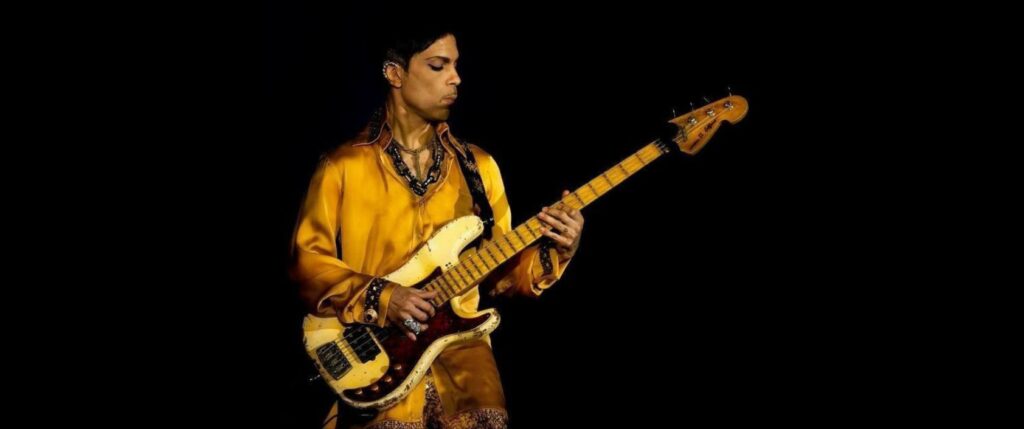
I Wanna Be Your Lover appears on Prince’s second album, titled… Prince! Released in 1979, this album marked the artist’s first major success. Prince played all the instruments himself, including the bass.
This bassline has a bouncy feel, thanks to the 16th note on the second beat of the first measure and on the first and fourth beats of the second measure of the cycle. Make sure to hit the G# on the ‘e’ of the fourth note in the third measure, and pay close attention to the slide that kicks off the next cycle on the fourth measure.
This bass sound has been debated for a long time, some say it’s a synth, others think it’s an electric bass with a filter effect, and why not both? Hard to tell, but you could easily replicate a similar sound with a synth bass pedal or a Moog-style keyboard.
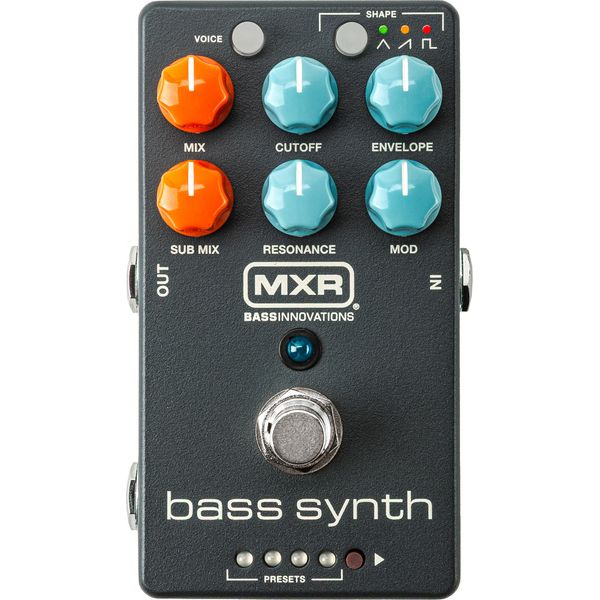
Play I Wanna Be Your Lover in mySongBook.
Subscribe to mySongBook to play the full versions of the tracks!
Celebration – Kool and the Gang (1980)
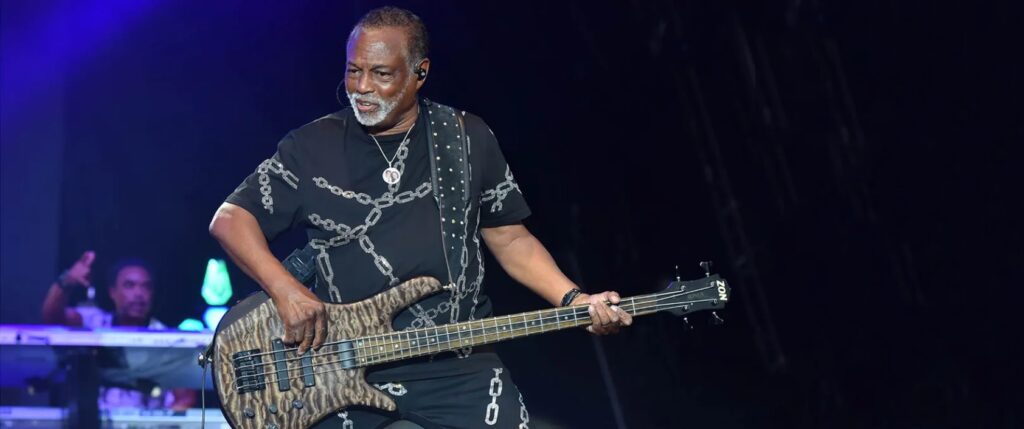
Celebration is arguably the most played funk track at dance parties around the world. The band was founded by bassist Robert ‘Kool’ Bell, whose nickname gave the group its name. They stood out with hits like Jungle Boogie, which even appears on the Pulp Fiction soundtrack, and later Get Down On It.
The bassline in Celebration is quite repetitive, staying almost the same throughout the track (except during the bridge), giving the song a constant energy. Once again, it’s the arrangement of the 16th notes that drives the groove.
Play Celebration in mySongBook.
Let’s Dance – David Bowie (1983)
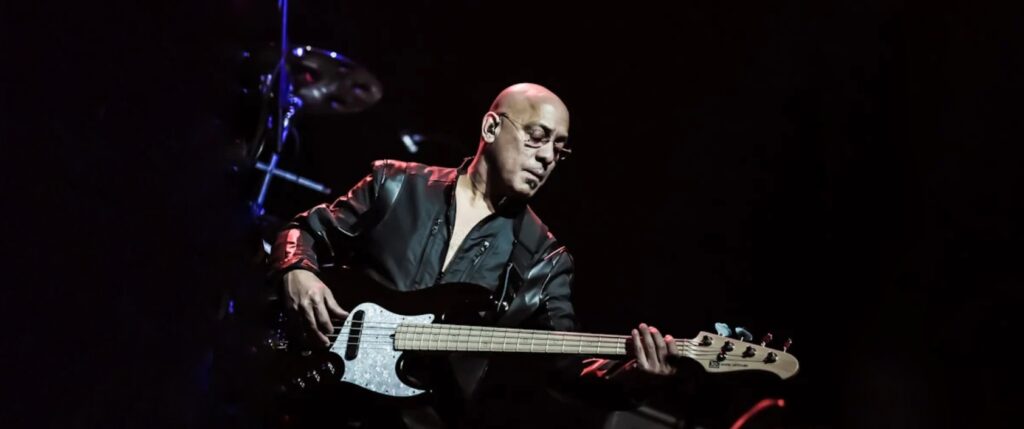
David Bowie went through many different phases in his career, but Let’s Dance is definitely the album that got the whole world dancing in the ’80s. On guitar and production duties, a familiar face: Nile Rodgers, who we’ve mentioned before. He was joined by the legendary Stevie Ray Vaughan and his longtime partner Bernard Edwards, who was never far away. In fact, Edwards only played bass on one track, Without You, which I highly recommend checking out. On the rest of the album, bass duties were handled by Carmine Rojas.
The bassline of the title track Let’s Dance is marked by strong emphasis on each beat, with small syncopations sprinkled throughout the cycle. The tab indicates that the bass should be tuned a half-step down from standard tuning (Eb-Ab-Db-Gb instead of E-A-D-G). As for the sound, the bass is doubled by a synth on the recording, once again, a synth bass pedal will come in handy.
Play Let’s Dance in mySongBook.
It Ain’t Over ‘Til It’s Over – Lenny Kravitz (1991)
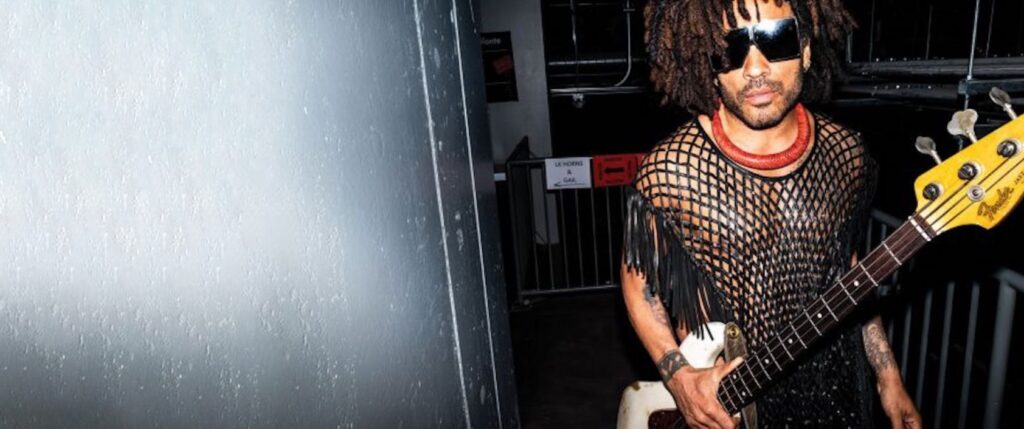
Recognized as the rock’n’roll icon of the ’90s, Lenny Kravitz first found major success with It Ain’t Over ‘Til It’s Over, a song that’s anything but rock’n’roll. With its pop and soul influences, this track marked a decisive turning point in Lenny’s career, featuring a strong Motown vibe highlighted by strings and the Phenix Horns, Earth, Wind & Fire’s legendary horn section, classy stuff!
Of course, the bass was played and recorded by Kravitz himself, who handles almost all the instruments on his albums, guitar, bass, drums, keyboards, and vocals, much like his idol, Prince. This bassline perfectly reflects Lenny Kravitz’s style: groovy, no frills, and musically outstanding.
Play It Ain’t Over ‘Til It’s Over in mySongBook.
Time for a Challenge
For more advanced bassists, I’ve picked two slightly trickier tracks that will help you take your playing to the next level.
Soul With A Capital “S” – Tower of Power (1993)

The band Tower of Power, hailing from Oakland and still somewhat unknown to the general public, has nonetheless been a funk pioneer since the release of their debut album in 1970. In 1973, they released their self-titled album, driven by the hit What Is Hip?, which catapulted them into the spotlight and remains one of their most iconic tracks. After nine studio albums released between 1973 and 1991, the band returned in 1993 with T.O.P., featuring Soul With A Capital “S”, the track we’ll focus on here.
Since the formation of the Californian band, Francis Rocco Prestia was one of Tower of Power’s iconic members until his passing in September 2020. Known for his 16th notes playing, Soul With A Capital “S” is an excellent example of the rhythmic consistency Prestia was famous for. It’s essential to master the 16th notes patterns and practice raking with the right hand (moving from string to string with the same finger) to play the song as faithfully as possible.
Play Soul With A Capital “S” in mySongBook.
Cracker Island – Gorillaz (2022)

This Gorillaz track gives me the chance to show that you can find groovy basslines outside of funk, soul, or disco. Cracker Island is a pop/electro song for which the band enlisted the talents of Thundercat, one of the most influential bassists, singers, and producers of the 21st century. He’s known for his numerous collaborations with artists like Kendrick Lamar, Erykah Badu, Silk Sonic, Justice, not to mention Mac Miller and Travis Scott.
Stephen Bruner, aka Thundercat, stands out for his virtuosic bass playing and his love for complex chords and effects. He is a master of the six-string bass and a passionate manga fan, making him as much a character as a musician. The bassline of Cracker Island can be played on a five-string bass, Thundercat only uses the high C string (the highest string on a six-string bass) for a few fills, notably the final one in the track, which is fairly fast.
Play Cracker Island in mySongBook.
Your turn!
We hope you enjoyed this top 10. Have any other groovy basslines, or basslines in other styles come to mind? Tell us in the comments, and let us see your top 10.
Subscribe to our newsletter so you don’t miss the upcoming articles.
Leave a comment
Your email address will not be published.


